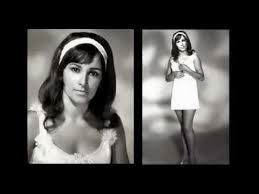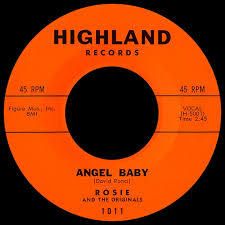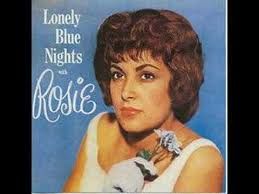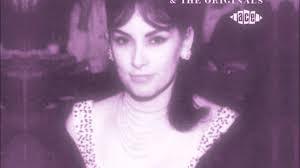John Lennon loved Rosie Hamlin’s “Angel Baby.” Of course he did. There was nothing not to like.

Rosie Hamlin in the “Angel Baby” days.
Rosie Hamlin, who died last Thursday at the age of 71, wrote and recorded “Angel Baby” when she was 14 years old.
It wasn’t her only record. It was her only hit, and it confirmed a great truth: One-hit wonders in their own way are as important to rock ‘n’ roll as the Beatles.
Trying to explain why “Angel Baby” is a wonderful record would in an odd sense diminish it.
Written as a love poem by a young teenage girl, its lyrics sound like, well, a love poem written by a young teenage girl.
Take the third verse.
“Please never leave me / Blue and alone / If you ever go / I’m sure you’ll come back home.”
Rhyming “alone” with “home,” for starters, is the sort of thing that drives professional lyricists around the bend.
It’s not Gershwin. And so what? At 14, Gershwin wasn’t Gershwin, either, and at 14, Rosie Hamlin wasn’t aiming for Gershwin.

She wrote a poem that happened to fit perfectly into one of the simplest, most basic melody/rhythm combinations you can imagine.
Not that it was easy to nail something that sounds so simple.
When Rosie and the Originals recorded the song in November 1960, Hamlin would say years later, they did 30 or more takes, working to get just the right blend of guitar, piano, drums, voice and saxophone.
Yeah, those were the days when the people who made records – many of whom were not yet even called “producers” in the rock ‘n’ roll game – appreciated a good saxophone.
The sax player on “Angel Baby,” Tony Gomez, was a bass player who learned the saxophone on the spot because the Originals’s regular bass player had to stay home and apparently do chores for his mother.
The result, in Hamlin’s words, was “not the best rendition of a sax solo, but one that anyone to this day can hum.”
She’s got that right. It’s short and basic, and way more important, it’s dreamy. It fits the mood of the song, which is leaning out the window and wishing on a star.
The record itself is for playing on the radio, by which we mean the car radio. Or on a jukebox.
It has the classic sound of rock ‘n’ roll’s secret silver age – the years between Elvis going into the Army, 1958, and the Beatles showing up on The Ed Sullivan Show, 1964.
A lot of folks dismiss that era as lost years. The truth is some of rock ‘n’ roll’s best music was created then and some of the rest was incubating.

It was also a Wild West era, before the Beatles and Motown and their cohorts made rock ‘n’ roll seem profitable enough so big corporate entities started wanting to own it.
Back in 1960, you could record a song and release it on a small label for a couple of hundred bucks. If you could get a popular DJ to play it, you could have at least a local hit.
You wouldn’t get rich, and if you were the artist, like Rosie Hamlin, you’d almost certainly get stiffed on royalties.
That’s an ongoing financial and moral shame, to this day. But creatively, you’d have put a marvelous three minutes of music into American popular culture.
Rosie Hamlin was born in Oregon, grew up in Alaska, then moved to California on the cusp of her teens. Her parents were musicians, though not professionals, and she grew up wanting to sing any music anywhere she could.
She sang with family and local groups before she was hooked up with the Originals, who were several years older.
“Angel Baby” was released on Highland Records, and when it became a national hit, peaking at No. 5, Hamlin was recruited by Jackie Wilson to jump to his Brunswick label.
Brunswick wasn’t always artist-friendly, either, and Hamlin’s records there got little attention.
She retired in 1963 to raise her family and returned to music in the 1970s, performing some new songs and always “Angel Baby.” Some three decades later she retired for good to concentrate on other pastimes like gardening.

Lennon loved “Angel Baby” enough to record it. He also told Rolling Stone magazine he was fascinated by its ragged flip side, “Give Me Love,” which Hamlin said was pretty much made up on the spot after the Originals finished “Angel Baby” and realized a 45 rpm record required two songs.
Lennon called Rosie one of his favorite singers.
“Angel Baby” was also recorded by Linda Ronstadt, among others, and the even better news for Hamlin was that by that time she finally had her writing credit restored.
When it was first released by Highland, the writing credit was wrongly given to group member David Ponci. That sort of “mistake” was one of the downsides of the Wild West era.
In any case, Rosie Hamlin said years later that she was extremely grateful “Angel Baby” had endured and that no, she never got tired of singing it.
The rest of us don’t even get tired of humming the sax break. Say hi to the angels, baby.
����~����w�
